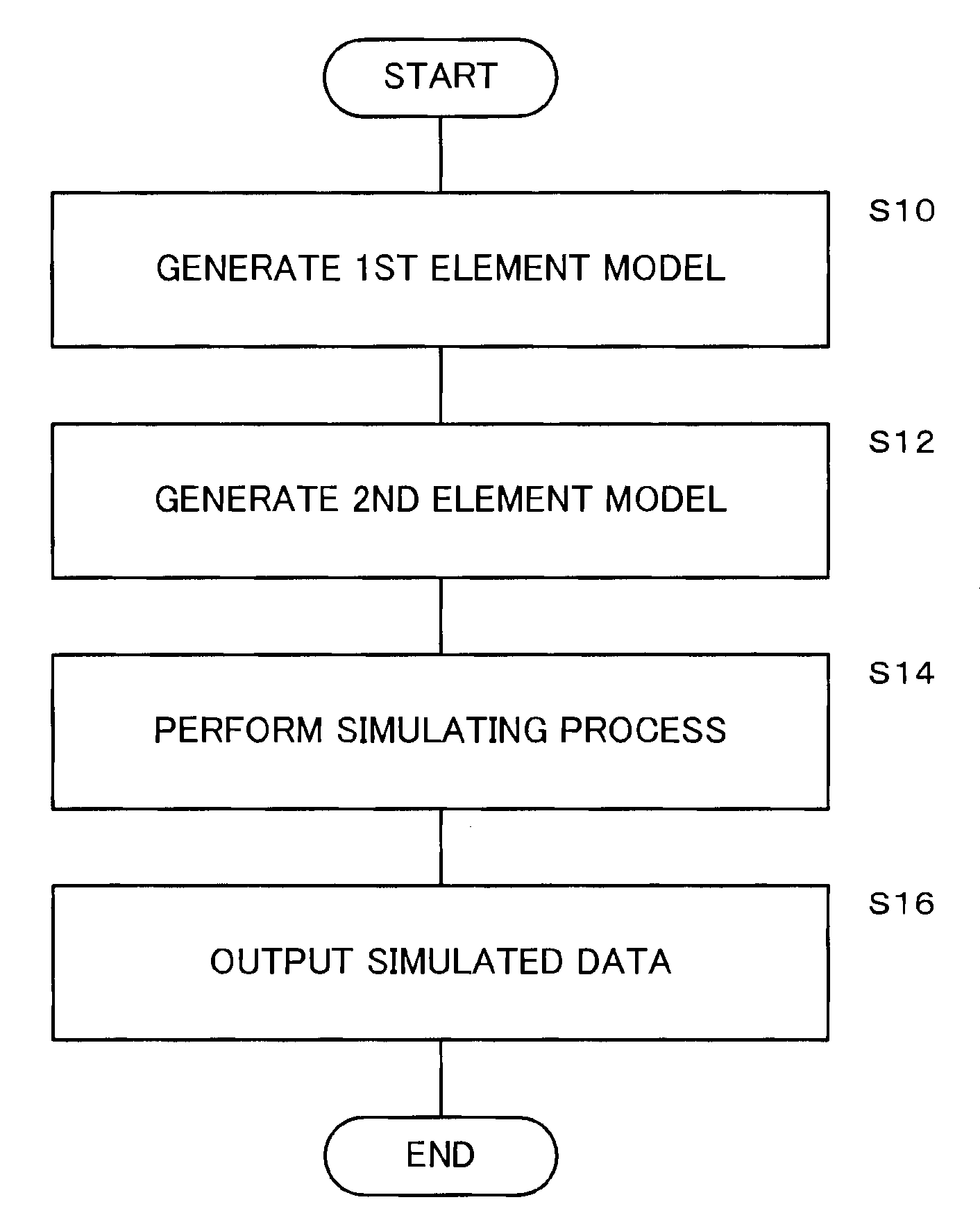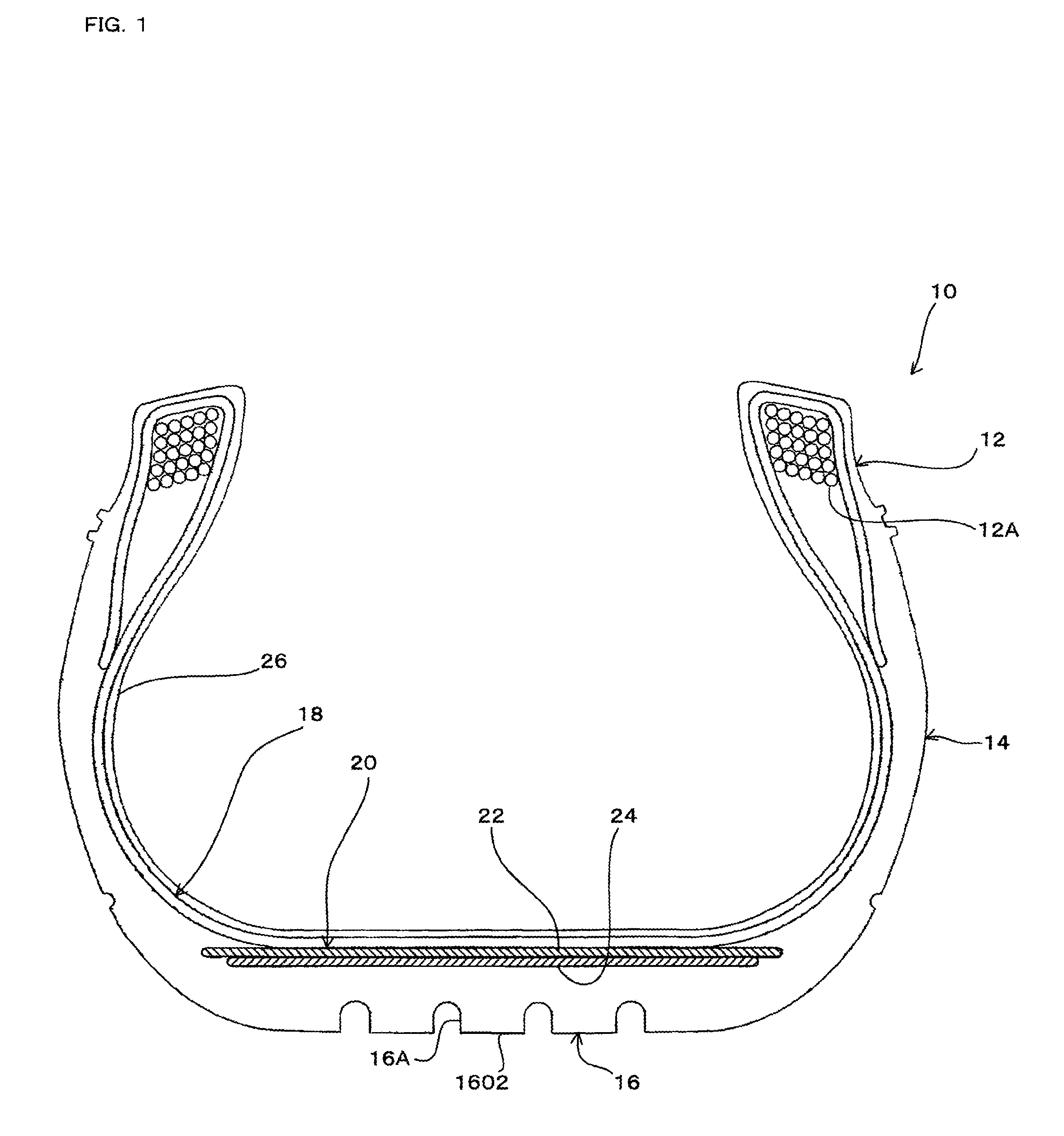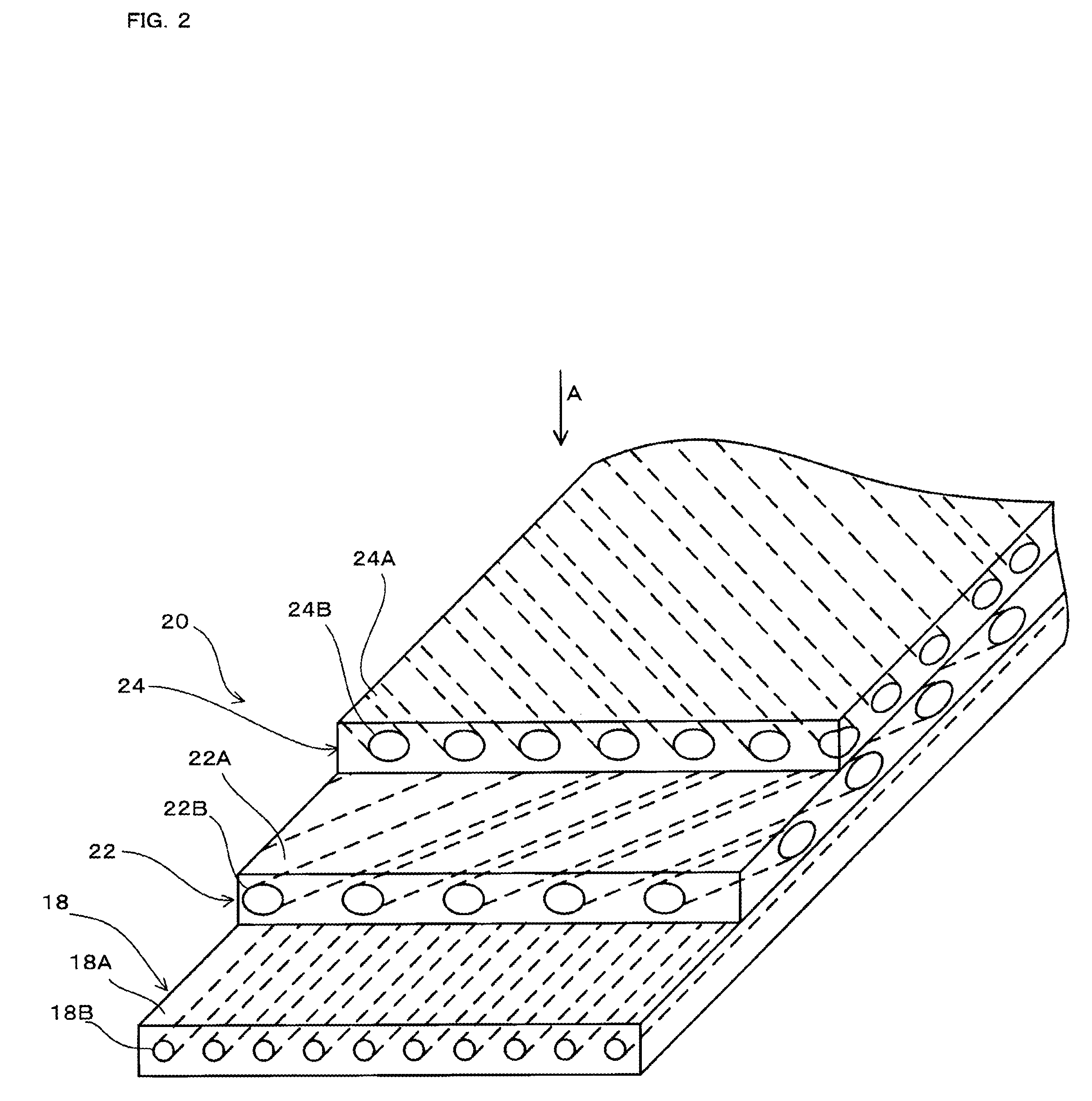Method of simulating pneumatic tire based on finite element models
a pneumatic tire and finite element technology, applied in the field of simulating pneumatic tires based on finite element models, can solve the problems of high labor intensity and time-consuming, quadrilateral membrane elements failing to properly analyze the behavior of composite assemblies, simulating methods failing to sufficiently analyze the performance of tires with accuracy, etc., to achieve accurate analysis of pneumatic tire performance
- Summary
- Abstract
- Description
- Claims
- Application Information
AI Technical Summary
Benefits of technology
Problems solved by technology
Method used
Image
Examples
Embodiment Construction
[0024]A method of simulating a pneumatic tire according to an embodiment of the present invention will be described in detail below with reference to the drawings.
[0025]First, a composite assembly (stiffener) of a tire and a process of modeling the composite assembly will be described below.
[0026]FIG. 1 is a transverse cross-sectional view of a pneumatic tire 10 taken along a plane extending through the central axis thereof. FIG. 2 is an enlarged fragmentary perspective view, partly in cross section, showing structural details of a composite assembly of a carcass and a belt of the pneumatic tire shown in FIG. 1. FIG. 3 is a plan view of the composite assembly as viewed in the direction of arrow A in FIG. 2.
[0027]As shown in FIG. 1, the tire 10 comprises a pair of laterally spaced beads 12, a pair of laterally spaced sidewalls 14, a tread 16, a carcass 18, and a belt 20. The carcass 18 and the belt 20 jointly serve as a composite assembly as described later.
[0028]The beads 12, which ...
PUM
 Login to View More
Login to View More Abstract
Description
Claims
Application Information
 Login to View More
Login to View More - R&D
- Intellectual Property
- Life Sciences
- Materials
- Tech Scout
- Unparalleled Data Quality
- Higher Quality Content
- 60% Fewer Hallucinations
Browse by: Latest US Patents, China's latest patents, Technical Efficacy Thesaurus, Application Domain, Technology Topic, Popular Technical Reports.
© 2025 PatSnap. All rights reserved.Legal|Privacy policy|Modern Slavery Act Transparency Statement|Sitemap|About US| Contact US: help@patsnap.com



